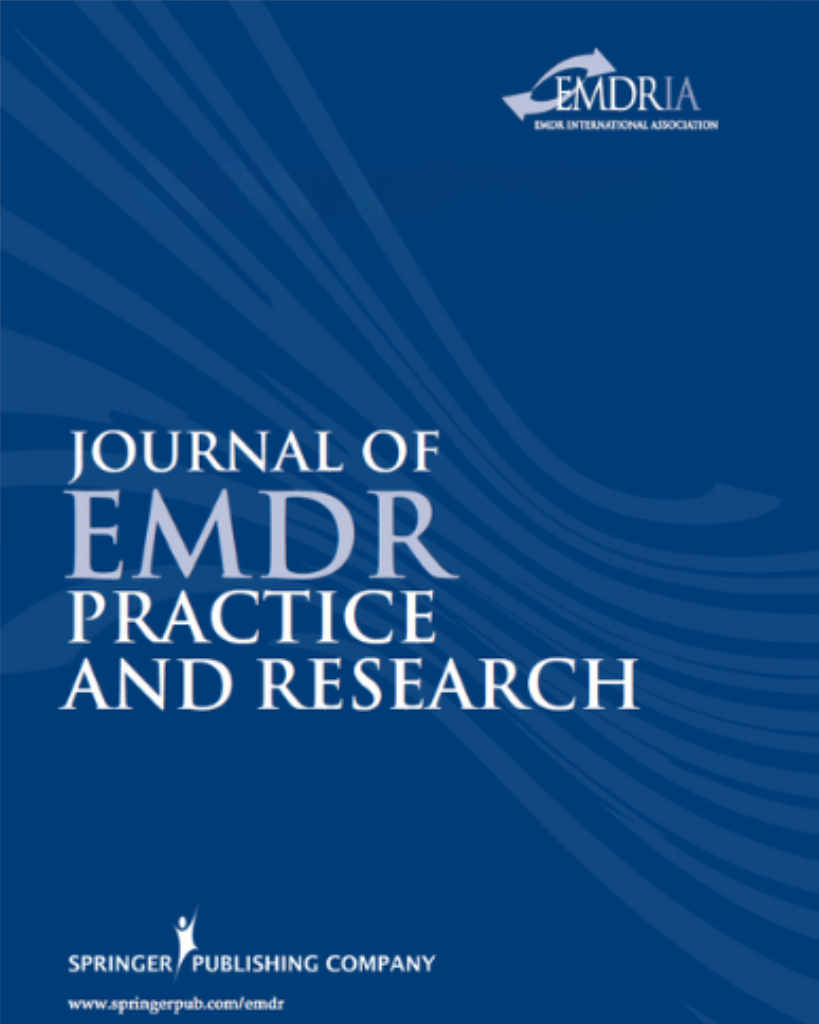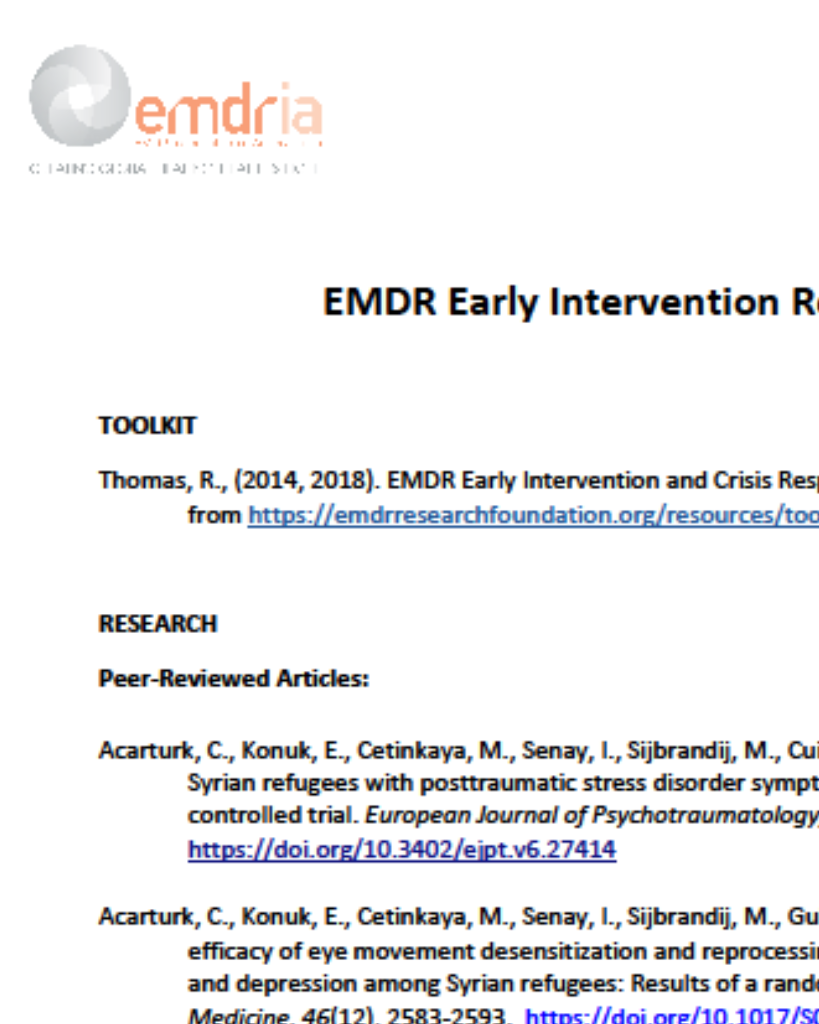Correlates of EMDR Therapy in Functional and Structural Neuroimaging: A Critical Summary of Recent Findings
Results of neurobiological functional and structural changes taking place at PTSD treatment, presented 1999–2012 by various research groups.
Article Abstract
“Neuroimaging investigations of the effects of psychotherapies treating posttraumatic stress disorder (PTSD), including eye movement desensitization and reprocessing (EMDR), have reported findings consistent with modifications in cerebral blood flow (CBF; single photon emission computed tomography [SPECT]), in neuronal volume and density (magnetic resonance imaging [MRI]), and more recently in brain electric signal (electroencephalography [EEG]). Additionally in the recent past, EMDR-related neurobiological changes were monitored by EEG during therapy itself and showed a shift of the maximal activation from emotional limbic to cortical cognitive brain regions. This was the first time in which neurobiological changes occurring during any psychotherapy session have been reported, making EMDR the first psychotherapy with a proven neurobiological effect. The purpose of this article was to review the results of functional and structural changes taking place at PTSD treatment and presented during the period of 1999–2012 by various research groups. The reported pathophysiological changes are presented by neuropsychological technique and implemented methodology and critically analyzed.”
—Description from publisher
Article Access
Open Access
Pagani, M., Högberg, G., Fernandez, I., & Siracusano, A. (2013). Correlates of EMDR Therapy in Functional and Structural Neuroimaging: A Critical Summary of Recent Findings. Journal of EMDR Practice and Research, 7(1), 29–38. https://doi.org/10.1891/1933-3196.7.1.29
About the Journal
The Journal of EMDR Practice and Research is a peer-reviewed publication devoted to integrative, state-of-the-art papers about Eye Movement Desensitization and Reprocessing. It is a broadly conceived interdisciplinary journal that stimulates and communicates research and theory about EMDR, and their application to clinical practice. The Journal of EMDR Practice and Research is the Official Publication of the EMDR International Association.
Date
March 1, 2013
Creator(s)
Marco Pagani, Göran Högberg, Isabel Fernandez
Contributor(s)
Alberto Siracusano
Practice & Methods
Mechanisms of Action, Neurobiology
Extent
10 pages
Publisher
Springer Publishing Company
Rights
Copyright © 2013 EMDR International Association
APA Citation
Pagani, M., Högberg, G., Fernandez, I., & Siracusano, A. (2013). Correlates of EMDR Therapy in Functional and Structural Neuroimaging: A Critical Summary of Recent Findings. Journal of EMDR Practice and Research, 7(1), 29–38. https://doi.org/10.1891/1933-3196.7.1.29
Series
7
Installment
1
Audience
EMDR Therapists
Language
English
Content Type
Article, Meta-analyses/Systematic Reviews, Peer-Reviewed
Original Source
Journal of EMDR Practice and Research
Access Type
Open Access





